Wildcat Dreams
is President Ivelaw Lloyd Griffith's triweekly e-newsletter that highlights various campus activities and updates about new initiatives and programs. Share with friends and family and feel free to send comments to
|
Wildcat Dreams Special Edition: Black History Month
In this special edition of the Wildcat Dreams, Fort Valley State University celebrates Black History Month.
|
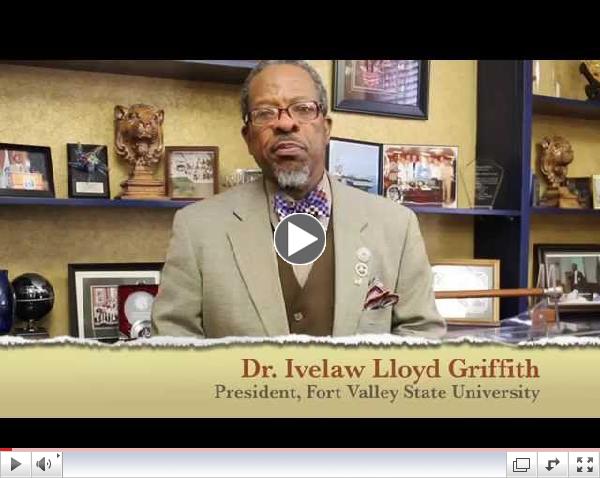 | | Dr. Ivelaw Lloyd Griffith's 2015 Black History Month Greeting |
Dr. Ivelaw Lloyd Griffith's 2015 Black History Month Greeting
FVSU President Dr. Ivelaw Lloyd Griffith shares highlights of campus activities related to the recognition of the 2015 Black History Month celebration at Fort Valley State University.
|
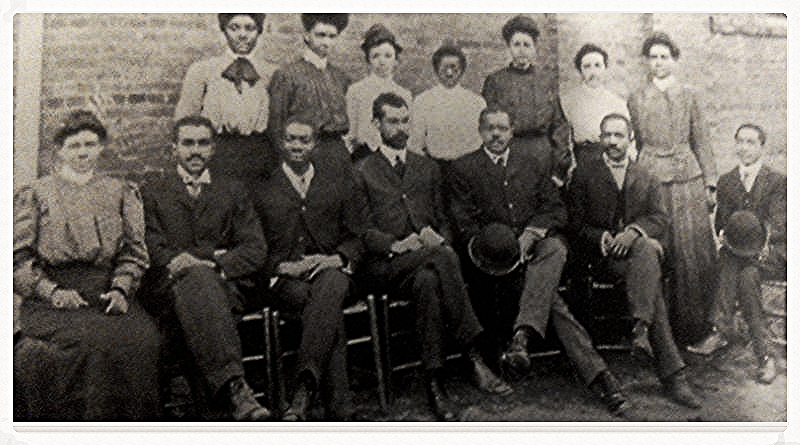 | Fort Valley High and Industrial School's faculty members in 1908.
|
Marketing and Communications would like to give a special thanks to individuals that have written articles for this Black History Month edition. - Dr. Dawn Herd-Clark, chair for the Department of History, Geography, Political Science, and Criminal Justice
- Dr. Peter Dumbuya, professor of history
- Dr. Fred van Hartesveldt, history faculty member
- Dr. Christine Lutz, associate professor of history
- Stacey Watson, FVSU graduate student of history
- Christina D. Milton, public relations specialist
|
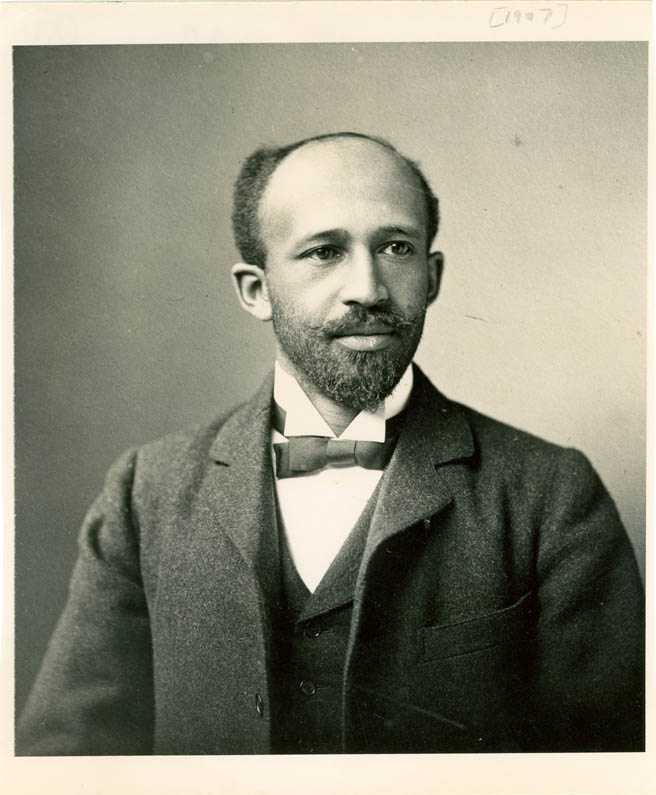 | |
Author and activist W.E.B. DuBois
|
W.E.B. DuBois: FVSU's first Founders Day Speaker
Fort Valley State University's Founders Day honors the 18 men that helped to found our campus.
The very first speaker was W.E.B. DuBois, a historian, civil rights activist, Pan Africanist, sociologist, author and editor. He was born in Barrington, Massachusetts.
Learn more about DuBois' life as a scholar and activist here. See the very first Founders Day program in the University of Massachusetts-Amherst's special collection of W.E.B. DuBois' papers online here. Read FVSU associate professor of history, Dr. Christine Lutz's article about W.E.B. DuBois' participation in the Pan African Congress here. |
FVSU ALUMNI
SPOTLIGHT
On the Move
|
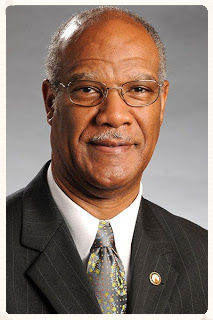 | | Calvin Smyre, a 1970 Fort Valley State University alum, was honored on the Civil Rights Hall of Fame. |
FVSU's Civil Rights icon: Calvin Smyre
The Honorable Calvin Smyre, a 1970 Fort Valley State University alum, is the first of two graduates the Office of Marketing and Communications is featuring this month. The current dean of Georgia's legislature has served more than 39 years as a state representative. He is chairman of the board for the FVSU Foundation, Inc. and the executive vice president of corporate affairs at the Synovus Financial Corporation.
Last year, he was honored on the Civil Rights Hall of Fame.
Read FVSU Marketing and Communication's past interview with Smyre here. |
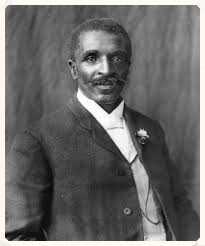 | |
George Washington Carver, botanist and inventor, is renowned for his research into peanuts.
|
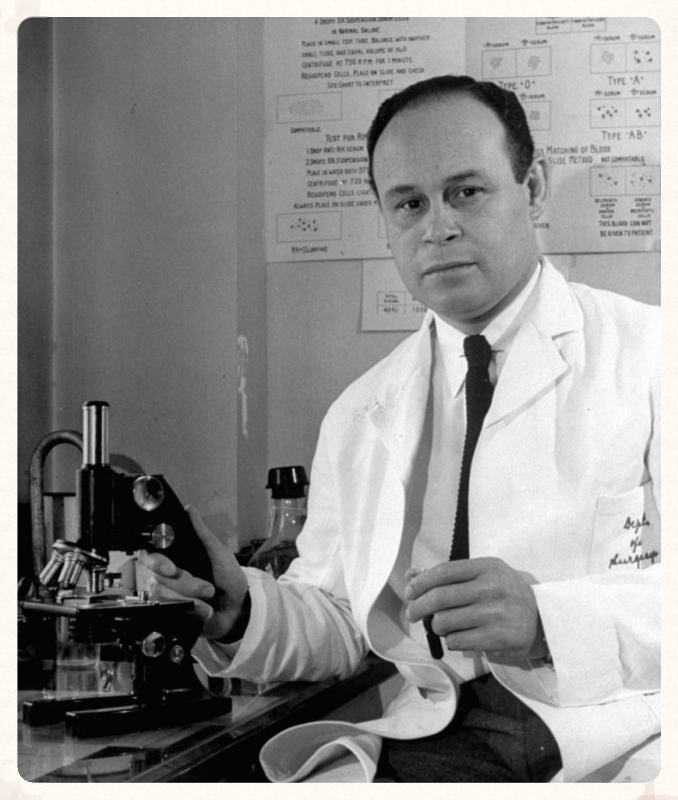 | | Dr. Charles Drew, an African-American doctor, created storage methods for blood and blood plasma to transplant into patients. |
Famous African-American scientists and inventorsLearn about the lives of 14 African-American scientists and inventors that have broken barriers and changed lives.
|
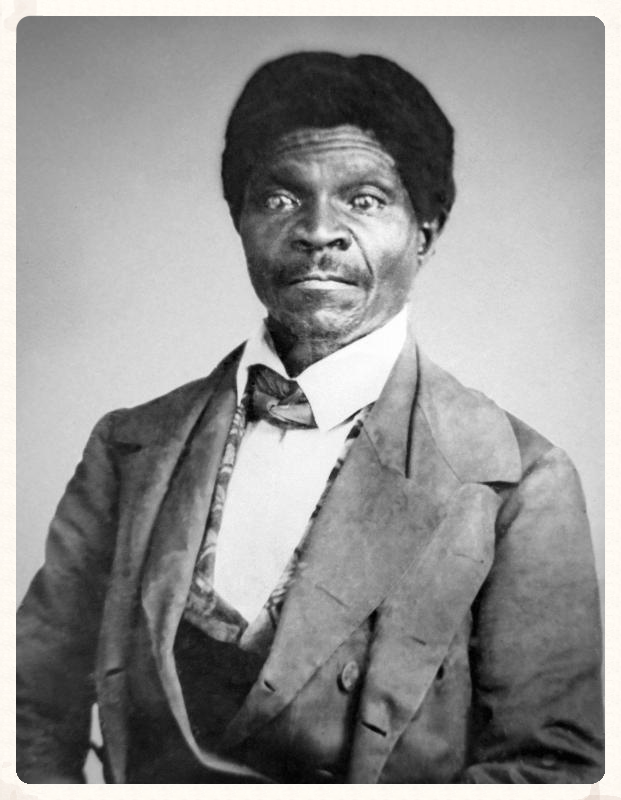 | |
Dred Scott
|
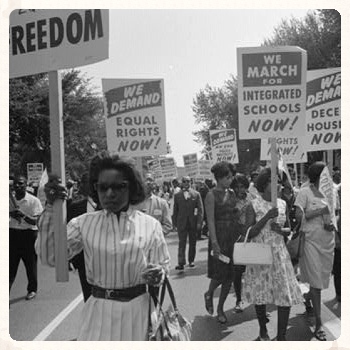 | March on Washington, 1963 (taken by Warren K. Leffler, Library of Congress)
|
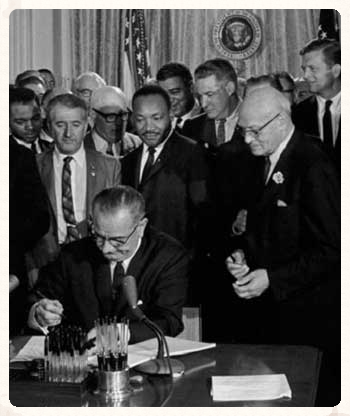 | |
President Lyndon B. Johnson signing the Civil Rights Act of 1964.
|
Important Legislation and Rulings that affected African-Americans
Here is a selected list of important legislation and rulings that affected African-Americans. Follow the links to find out more about these watershed laws and rulings.
Important Legal Decisions
Amendments
Executive Orders
|
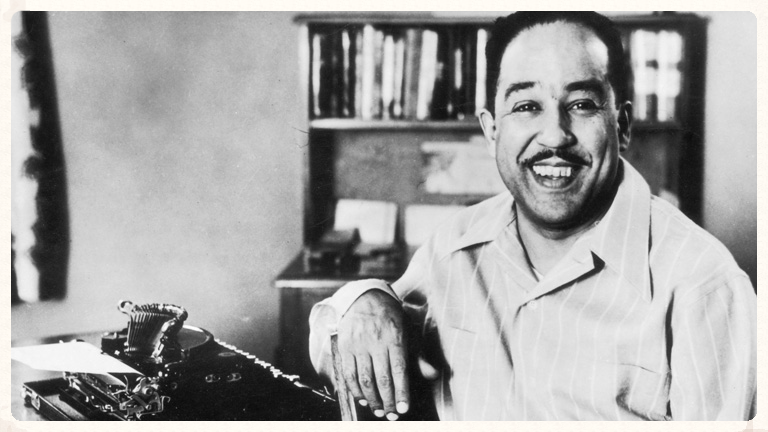 | |
Harlem Renaissance novelist, poet and playwright Langston Hughes was born Feb. 1, 1902.
|
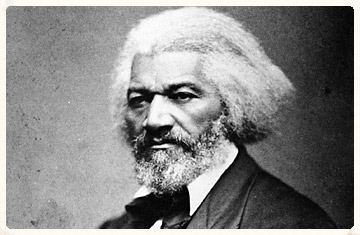 | |
Frederick Douglass, abolitionist and statesman, was born on Feb. 3, 1818.
|
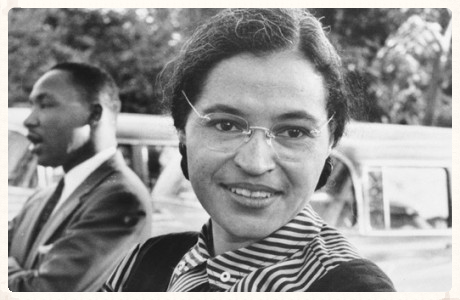 | |
Rosa Parks, mother of the Civil Rights movement, was born on Feb. 4, 1913.
|
Famous African-Americans Born in February
Here is a list of famous African-American scholars, writers, athletes and artists born during Black History month. Follow the links to find out more about their lives, and how they helped to break down barriers. Feb. 2 - William Artis (ceramicist/ artist) Feb. 3. - Dennis Edwards (R&B singer/Temptations) Feb. 4 - Rosa Parks (mother of the Civil Rights Movement) Feb. 5 - Henry "Hank" Aaron (first baseball player to break Babe Ruth's record) Feb. 6. - Melvin Tolson (educator and writer that led Wiley Debate Team)
Feb. 7. - Chris Rock (comedian and film producer) Feb. 8 - Gary Coleman (actor from Different Strokes television series) Feb. 9 - Alice Walker (Pulitzer-Prize winning novelist of "The Color Purple") Feb. 10 - Leontyne Price (award-winning opera singer) Feb. 11 - Daniel James (1st African-American to attain 4-Star General Rank) Feb. 12 - Arsenio Hall (talk show host, entertainer) Feb. 13 - Emmett J. Scott (Chief Aid to Booker T. Washington) Feb. 14 - Frederick Douglass (abolitionist, journalist and statesman) Feb. 15 - Brian Holland (producer responsible for Motown Sound) Feb. 16 - Levar Burton (actor Star Trek Next Generation and Roots) Feb. 17 - Michael Jordan (basketball player) Feb. 18 - Toni Morrison (Nobel and Pulitzer-Prize winning novelist of Beloved) Feb. 19 - William "Smokey" Robinson (singer) Feb. 20 - Sidney Poitier (1st black actor to win an Academy Award for Best Actor) Feb. 21 - Nina Simone (jazz singer) Feb. 22 - Julius Erving (basketball player) Feb. 23 - W.E.B. DuBois (scholar, educator, author, journalist) Feb. 24 - Floyd Mayweather Jr. (boxer) Feb. 25 - Donald Quarrie (Olympic gold medalist) Feb. 26 - Antoine Dominique "Fats" Domino ("Blueberry Hill" singer) Feb. 27 - Marian Anderson - 1st African-American to perform with New York Metropolitan Opera Feb. 28 - Charles Aaron "Bubba" Smith - NFL athlete and actor
|
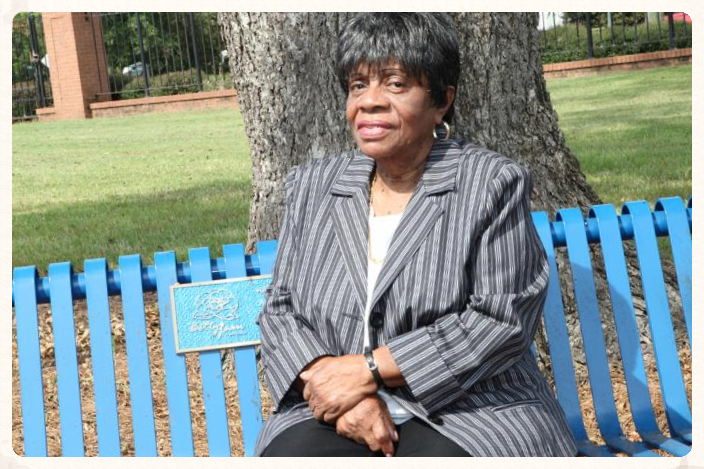 | | Odessa Hardison McNair wrote the second verse of FVSU's alma mater. |
Odessa Hardison McNair: FVSU's Living Legend
by
Christina D. Milton,
public relations specialist
|
Dr. Odessa Hardison McNair is a living legend on the campus of Fort Valley State University. Every time a special occasion-like Founders Day-takes place, students, faculty and staff members sing the university's alma mater, written in part by McNair. This month, the university is honoring McNair as one of its featured alums. McNair grew up in the city of Fort Valley. After graduating from high school, she matriculated onto Fort Valley State College's campus to pursue a degree in business education. At the time, Dr. Cornelius V. Troup was the president of the school. "It was a beautiful campus then," said McNair. "We also had a good president. We had good instructors who were very strict. We didn't have the technology that students have now. Our instructors were serious, and they were hard. We knew that we were coming here for a reason: we were coming here to get an education. That's what they emphasized. We had to follow the rules of the campus, and we had what they called a scope chart. If we weren't in our seats during chapel, then they would take the roll, and if you were absent, then everyone would know. They were very sincere about education at that time." McNair graduated from FVSC in 1954. She taught in Fort Valley for two years, before she was hired by President Troup to work as a secretary for his administrative dean, Waldo W. E. Blanchet. Read more here. |
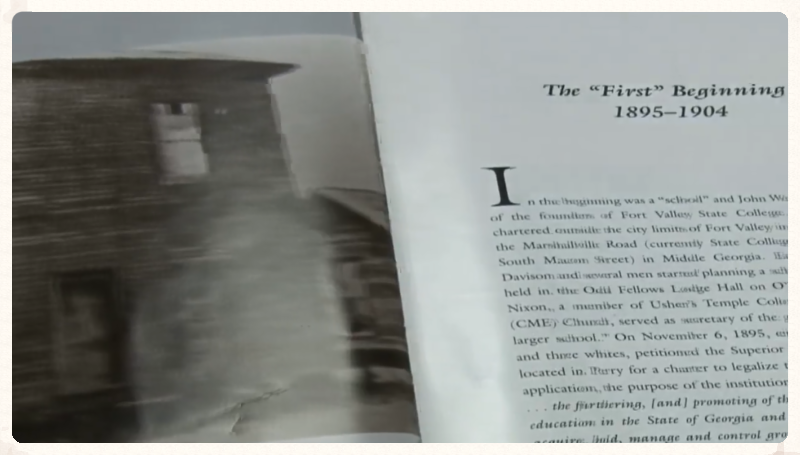 | |
"A Light in the Valley" is a historical overview Fort Valley State University's beginnings.
|
A Light in the Valley: A Pictorial History of Fort Valley State since 1895
Historian Donnie D. Bellamy wrote the essential facts of Fort Valley State, including the State Teachers and Agricultural College of Forsyth.
See WMAZ's video interview with interim library director Frank Mahitab about Bellamy's celebrated historical account of our university. Watch the archived video here.
|
|
|
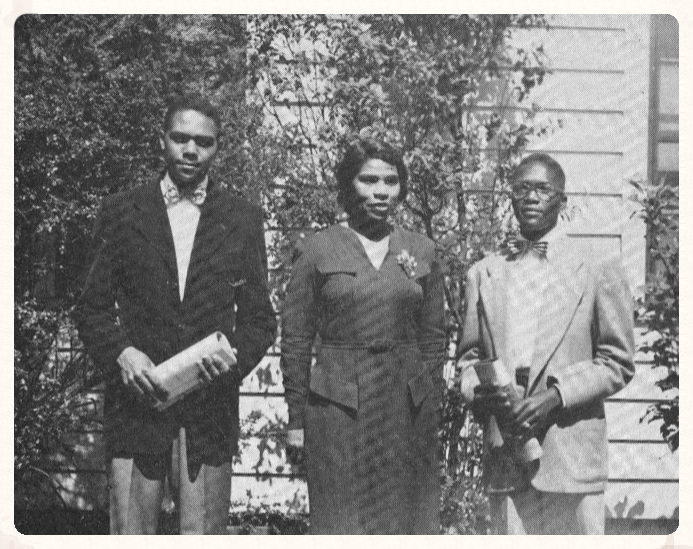 | |
William H. Alexander (left), associate editor of The Peachite and Benjamin Murray (right), editor-in-chief, pose at the president's home with Miss Marion Anderson, internationally famous contralto, visiting FVSU, April 1 and 2, 1950.
|
The Peachite: FVSU's Student Newspaper
View archived editions of Fort Valley State's Peachite student newspaper from the 1940s on the university's Digital Common Site. Follow the links below.
|
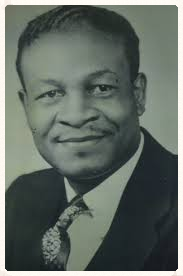 | | Dr. Cornelius Vanderbelt Troup, Fort Valley State College's second president. |
Past FVSU Presidents- Dr. Horace Mann Bond (1939-1945)
- Dr. Cornelius Vanderbelt Troup (1945-1966)
- Dr. Waldo William Emerson Blanchet (1966-1973)
- Dr. Cleveland W. Pettigrew'43 (1973-1982)
- Dr. Walter W. Sullivan (Acting President) 1983
- Dr. Luther Burse (1988-1990)
- Dr. Melvin E. Walker (Acting President) 1988-1990
- Dr. Oscar Prater (1990-2001)
- Dr. Kofi Lomotey (2001-2005)
- Dr. William Harris (2005-2006)
- Dr. Larry E. Rivers '73 (2006-2013)
- Atty. Kimberly Ballard-Washington (Interim President) 1939-1945 (2013)
For pictures of past presidents, visit FVSU's Presidential Gallery.
|
|
|
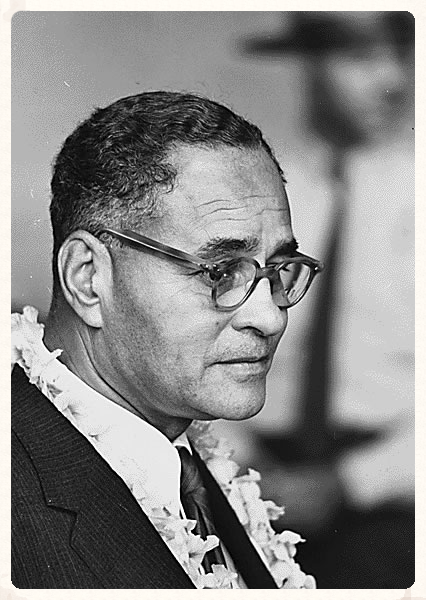 | |
Ralph Bunche, the 1st Black Person in the world to win the Nobel Prize.
|
Black Nobel Laureates
Learn about individuals of African descent from around the world who have received the Nobel Prizes. Follow the links below.
Nobel Prize
Ralph Bunche 1950 (United States, Peace 1st Black Person to win.)
Albert John Luthuli 1960 (South Africa, Peace, 1st Black African to win.)
Martin Luther King Jr. 1964 (United States, Peace)
Anwar El Sadat 1978 (Egypt, Peace)
Sir William Arthur Lewis 1979 (Saint Lucia, Economics)
Desmond Tutu 1984 (South Africa, Peace)
Wole Soyinka 1986 (Nigeria, Literature)
Derek Walcott 1992 (Saint Lucia, Literature)
Toni Morrison 1993 (United States, Literature, 1st Black woman to win prize.)
Nelson Mandela 1993 (South Africa, Peace)
Kofi Annan 2001 (Ghana, Peace)
Wangari Maathi 2004 (Kenya, 1st Black African woman to win prize.)
Barack Obama 2009 (United States, Peace)
Ellen Johnson Sirleaf 2011 (Liberia, Peace)
Leymah Gwobee 2011 (Liberia, Peace)
|
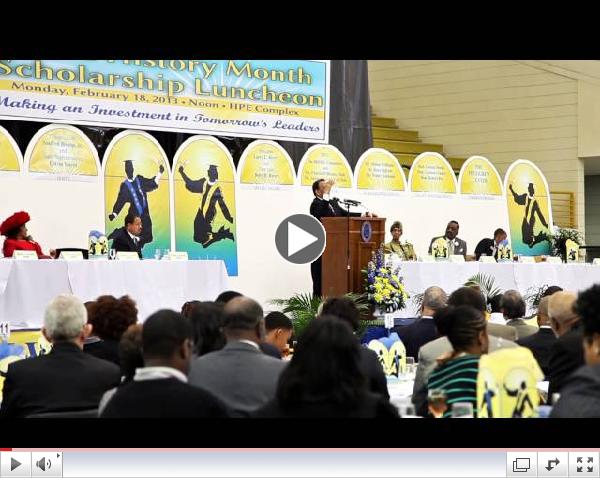 | |
Civil Rights icon Andrew Young Jr. at the 2013 Scholarship Luncheon
|
FVSU's 2013 Scholarship Luncheon: Andrew Young Jr. speaks about fight against segregation
Former U.N. Ambassador Andrew Young speaks about the historic fight against segregation at the university's Black History Month Scholarship Luncheon on Feb. 18. Watch the video here.
Learn about the advice he would give to FVSU students at this link.
|
FVSU to show Selma film on Feb. 24
|
Fort Valley State University will show the movie Selma, along with a panel discussion at 6 p.m. Tuesday, Feb. 24 in the C.W. Pettigrew Center.
|
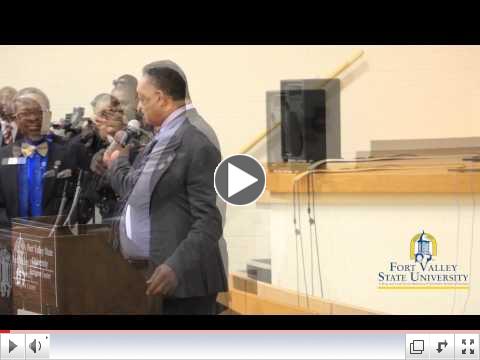 | | The Rev. Jesse Jackson and the Rainbow Push Coalition at FVSU |
Jesse Jackson and the Rainbow Push Coalition at FVSU
See highlights of Jesse Jackson and the Rainbow Push Coalition's visit on Fort Valley State University's campus.
|
|
BLACK HISTORY MONTH WALL OF WISDOM
|
WHO KNEW?
FVSU economic impact facts
|
In FY2013, defined as July 1, 2012, through June 30, 2013, Fort Valley State University spent $20.3 million within Peach County, addressing the following areas:
-$8.9 million on general operating expenditures
-$122,718 on additional capital expenditures
-$11,194, 057.47 on salaries, wages and benefits for employees residing in Peach County.
Additionally, FVSU's students are estimated to have spent $25.1 million on various non university activities, including transportation, entertainment, and in the case of off-campus students, room and board.
|
|
FVSU SPRING SEASON SPORTS SCHEDULES
| |
FVSU offers nonstop
sports action this spring
|
|
FORT VALLEY STATE UNIVERSITY
FEATURED IN AN UPSCALE MAGAZINE AD
Be sure to get your copy of Upscale Magazine's January/February issue and see Fort Valley State University's featured advertisement!
|
|
|
|
Volume 2 No. 10
|
February 15, 2015
|
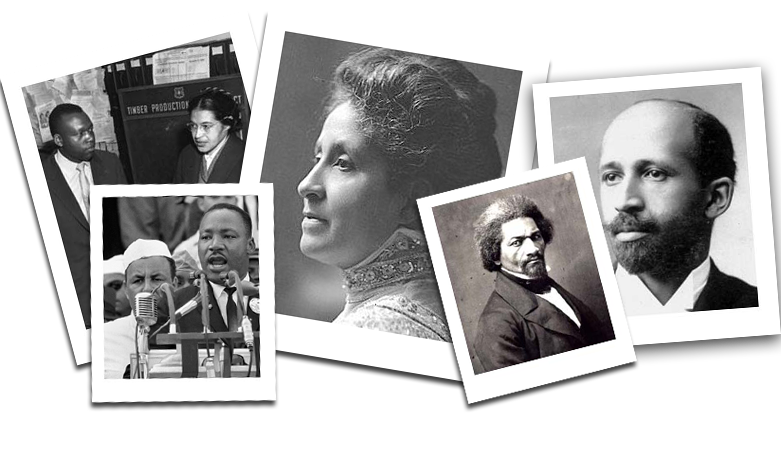
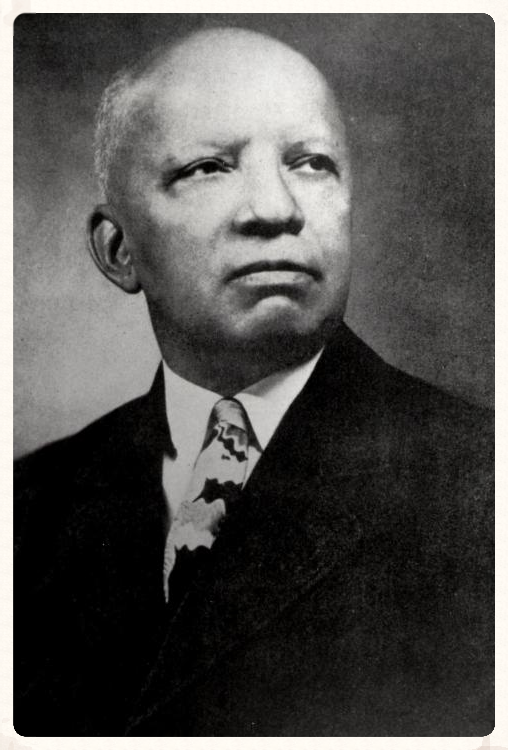 | |
Carter G. Woodson, a renowned historian that helped initiate the recognition of African-American history.
|
How Black History Month started
by
Dr. Christine Lutz
FVSU assistant professor of history & Wildcat Dreams special contributor
Black History Month, as Americans call it today, may have begun with a woman's proposal for a Day of Prayer. It would take a self-made man, Carter G. Woodson, to re-create the Day of Prayer to be the moment at which all Americans honor the contributions to America by peoples of the African Diaspora.
In 1903, Frances Harper, author and elocutionist, wrote to the Rev. Francis Grimke and suggested that he join her in promoting the idea of African Americans coming together across the country to pray. Black congregations and denominations had conducted days of prayer for decades since the Negro Day of Prayer on the White House lawn in March, 1863. However, Harper wanted Grimke to work with her to establish a Negro National Day of Prayer upon which all could agree. The prayers, she suggested, would promote racial unity, good character and courage.
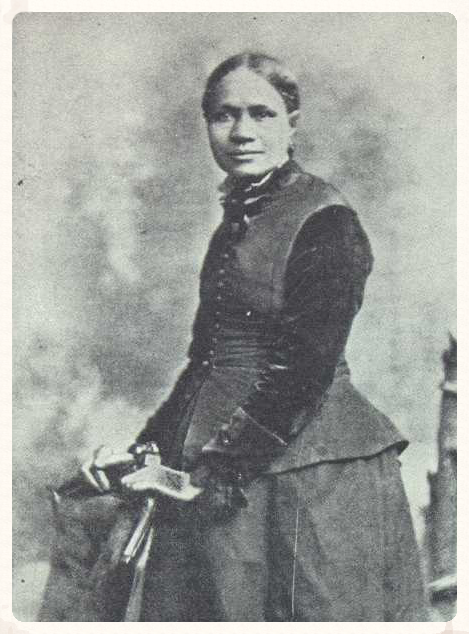 | | Frances Harper, abolitionist |
Frances Harper was born free in Maryland, a slave state, and she was orphaned at age three. Her aunt and uncle ensured that she was well-educated. By the time she was twenty, Watkins had published a volume of poetry and begun to speak on the Abolitionist elocution circuit, especially after her second book, Poems on Miscellaneous Subjects (said to have sold ten thousand copies), was published in 1854. Meanwhile, she had moved to Ohio to teach and also to volunteer on the Underground Railroad. There she met and married Fenton Harper in 1860. Harper, a prominent Abolitionist, fell ill, and she nursed him until his death in 1864.
To earn a living for his three children and their daughter, Harper returned to speaking, writing, and teaching. During the Reconstruction Era, Mrs. Harper traveled in the South and gave talks upon self-reliance and temperance to African Americans. After her speeches, she asked the women to stay behind while she spoke with them separately. Her poetry and novel reflected her belief that women were the engines of society. As she wrote about the black vote during Reconstruction, "I think that Col. Johnson said/His side had won the day/Had not we women radicals/Just got right in the way."
|
|
Fort Valley State History
|
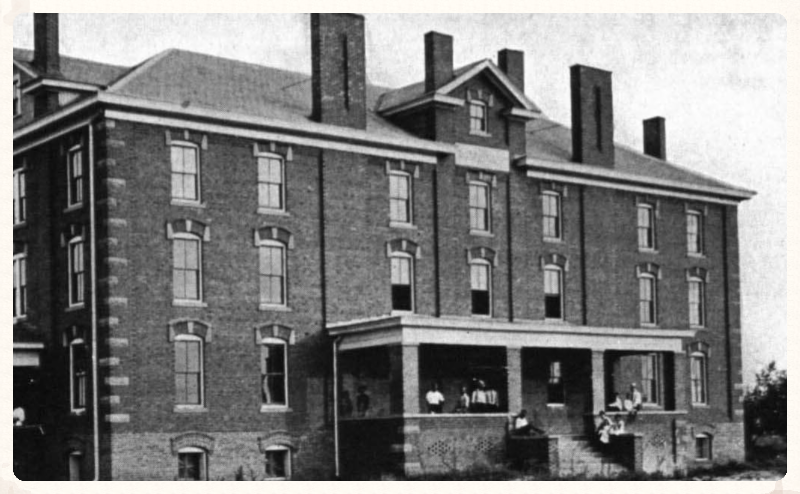 | |
Fort Valley High and Industrial School in 1908. (State Library of North Carolina)
|
A Brief History of Fort Valley State University
FVSU professor of history and Wildcat Dreams special contributor
Two pieces of federal legislation gave rise to historically black colleges and universities (HBCUs) in the 19th century. The first was an act of the United States Congress in July 1862, a year after the outbreak of the Civil War. Popularly known as the Morrill Act or the Morrill Land Grant Act, the act empowered the federal government to donate public lands in "a quantity equal to thirty thousand acres for each senator and representative in Congress to which the States are respectively entitled by the apportionment under the census of eighteen hundred and sixty." The lands and any proceeds from the sale thereof were to be used to support "agriculture and the mechanic arts," among other subjects, in state colleges and universities. States in rebellion or insurrection against the United States government were not eligible to receive the benefits of this act.
Building upon the act of 1862, the second Morrill Act of 1890 provided annual appropriations in the amount of $15,000 to each state and territory "for the more complete endowment and maintenance of colleges for the benefit of agriculture and the mechanic arts." The act also provided for an annual increase of $1,000 over the preceding year for the next ten years. Thereafter, Congress appropriated to each state and territory the sum of $50,000 for instruction in food and agricultural sciences and to prepare instructors to teach what it described as the elements of agriculture and the mechanic arts.
Read more about FVSU's history here.
|
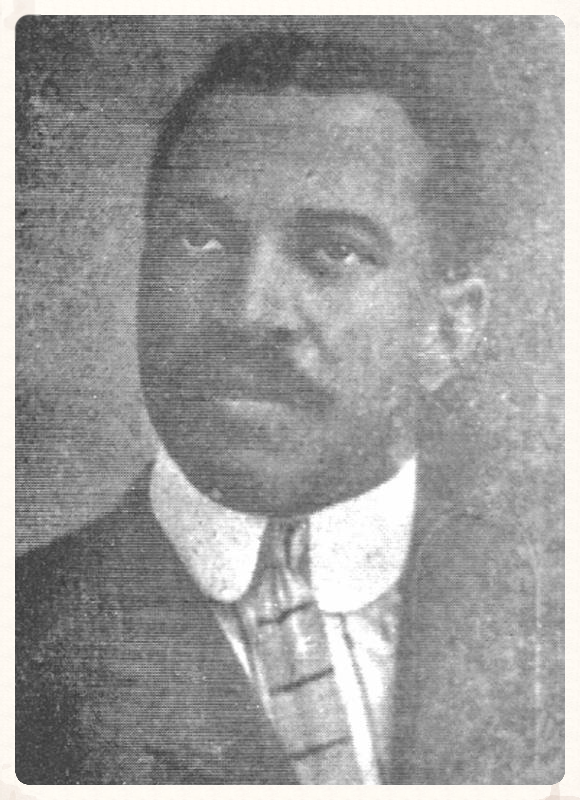 | John W. Davison, Fort Valley High and Industrial School's first principal
|
John W. Davison: The Man Behind Fort Valley State University
FVSU graduate student and Wildcat Dreams special contributor
The beginning of Fort Valley State University started with one man's dream to provide a school of higher education to African Americans in the south. John Wesley Davison, founder and principal of Fort Valley High and Industrial School, devised a plan that would provide a quality education to African-American students in the south.
Davison's birth came at a monumental time for African Americans. He was born Sept. 15, 1865 a few months before the 13th Amendment passed, abolishing slavery in the United States. Born in Crawford County near Hickory Grove he received his early education from a prominent southern family led by A. C Murchison near his home. Working on a field day and night, he managed to learn by reciting lessons with Murchison's children. After leaving Crawford County, Davison relocated to Fulton County where he enrolled at Atlanta University. There, he took classes preparing him for a career in education.[1]
After he graduated from college, Davison moved to the small city of Fort Valley, where he taught out of one of the rooms inside his home.
Read more about Davison here.
|
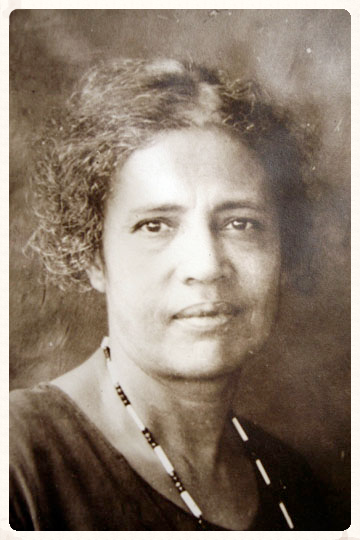 | | Florence Johnson Hunt, wife of Fort Valley High and Industrial School's second principal, Henry A. Hunt. |
Florence Johnson Hunt: wife of Fort Valley High and Industrial School second principal Henry A. Hunt
by
Dr. Fred van Hartesveldt
FVSU professor of history & Wildcat Dreams special contributor
Florence Johnson Hunt is one of the unsung heroes of Fort Valley State University (Fort Valley High and Industrial School when she arrived). The wife of Henry Alexander Hunt, second principal and a key leader in the growth of the institution, Florence Hunt arrived in Fort Valley in early 1904.
At the time, FVH&I had an annual budget of $840 and an enrollment of 145. Although it offered virtually the only possibility of secondary education for blacks in Middle Georgia, the school was on the edge of financial collapse. It was also struggling for intellectual identity.
Some supporters, white and black, favored an academic model--pre-college courses such as Latin and Greek, for instance. More were inclined to the vocational model pioneered at Hampton and Tuskegee Institutes. The first principal, John W. Davison, favored the former and had been forced out. Although the Hunts' were academic graduates of Atlanta University, they believed that the vocational approach was the best for the day. With their cooperation, the advocates of the academic curriculum were removed and vocational programs, primarily agriculture and manual labor, established.
|
|
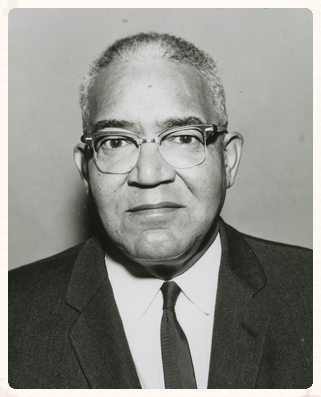 | |
Horace Mann Bond, Fort Valley State College's first president.
|
FVSU's first president: Horace Mann Bond, father of Civil Rights champion Julian Bond
by
Christina D. Milton,
public relations specialist
Horace Mann Bond, the first president of Fort Valley State University, had a distinguished career as a historian and college administrator. He was the father of civil rights activist and Georgia lawmaker Julian Bond.
FVSU's first president was born in Nashville, Tenn. on Nov. 8, 1904 to Jane Alice Browne and James Bond. His parents were children of former slaves that valued education. Both were college-educated and graduated from Oberlin College in Ohio.
Bond graduated from Lincoln Institute. In 1919, he attended Lincoln University, a prestigious HBCU in Pennsylvania. He graduated in 1923. The next year, he began his graduate work at the University of Chicago in Illinois. He married Julia Agnes Washington, and the couple had three children, Jane Marguerite, Horace Julian and James George.
Bond worked for twelve years to complete his doctorate degree. Between 1924 and 1939 he taught at Langston University in Oklahoma, and served as the school's chairman of education. He also was appointed the first academic dean of the newly formed Dillard University in New Orleans, La. Bond produced his best known work "The Education of the Negro in the American Social Order," and completed his doctoral dissertation published in 1939 as "Negro Education in Alabama: A Study in Cotton and Steel."
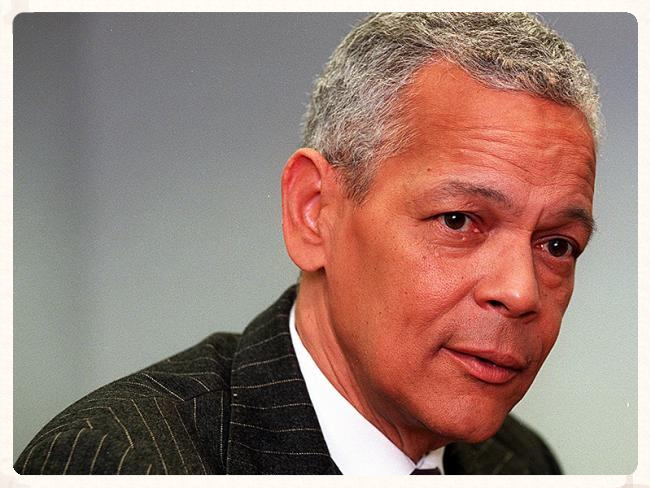 | | Julian Bond, civil rights leader, is the son of Horace Mann Bond, Fort Valley State University's first president. Bond spent his first two years on campus. |
In 1939, he accepted the presidency at Fort Valley State College (which later became FVSU). During his presidency, his son Julian Bond spent his first two years on campus. He spent the next five years improving the school's curriculum and finances. The college's income doubled during his reign, and the state appropriation more than triple. He oversaw the school's transition from a four-year baccalaureate granting institution.
Read more here.
|
 | |
Austin T. Walden, an alum of Fort Valley High and Industrial School (which would later become Fort Valley State University), was sworn in as the state of Georgia's first African-American judge.
|
FVSU alum Austin T. Walden: Georgia's first African-American judge since Reconstruction
by
Christina D. Milton,
public relations specialist
Austin T. Walden, a graduate of Fort Valley High and Industrial School, was a renowned attorney, political broker and civil right champion that was sworn in as Georgia's first African-American judge since the Reconstruction period.
As an attorney, Walden argued court cases to help attain equal pay for black educators in the state of Georgia. He also litigated lawsuits that helped to desegregate the Atlanta public school system and the University of Georgia.
Walden, a Fort Valley native, was born on April 12, 1885 to former slaves Jennie Tomlin and Jeff Walden. As a teen, he attended FVHIS and was the sole graduate of the class of 1902. He matriculated to Atlanta University, where he earned his bachelor's degree in 1907. Later, he received a L.L.B. degree from the University of Michigan's Law School in 1911.
The civil rights attorney began practicing law in Macon the next year. He joined the Army in June 1917, and served as a captain and assistant judge advocate. He married Mary Ellen Denney of Baltimore, Md. on May 18, 1918, and had two daughters Jenelsie and Austella.
|
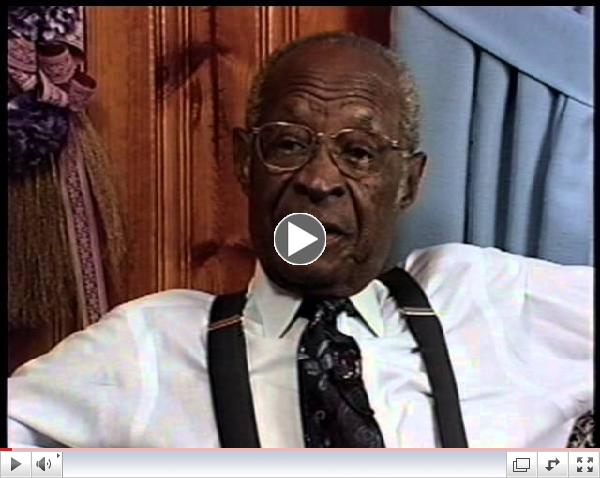 | | 2000 Georgia Agricultural Hall of Fame Recipient - Josiah Phelps |
FVSU Alum Josiah Phelps - Former FFA Executive Secretary
FVSU alum Josiah Phelps is a Georgia Agriculture Education Hall of Fame member. He earned his bachelor's degree from Fort Valley State University and a Master's of Science Degree from Ohio State University. Phelps served in vocational agriculture for 32 years, and served Georgia's youth through the FFA Alumni.
He helped to desegregate the Future Farmers of America organization, when he became the FFA Executive Secretary in 1980.
Read more about his life here.
.
|

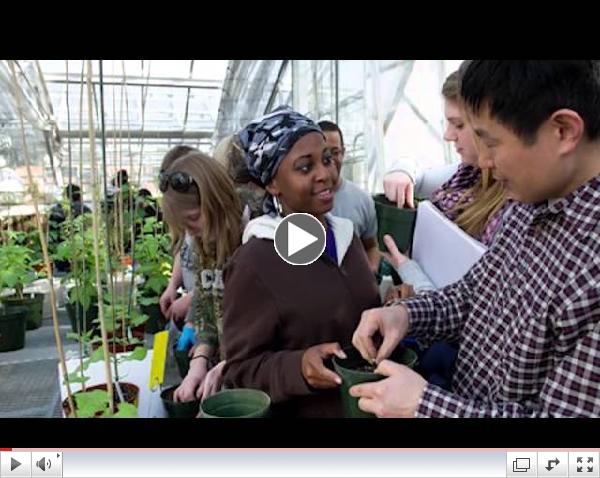 FVSU celebrates the 125 anniversary of the Second Morrill Act of 1890 FVSU celebrates the 125 anniversary of the Second Morrill Act of 1890
Note: Fort Valley State University and other land grant universities were started with the help of the Second Morrill Act.
The 1890 Land-Grant Universities are ladders to opportunity, especially for those students with limited access to education. We create a campus climate that fosters student satisfaction and a sense of community, leverage diversity to enrich the learning environment and contribute to the strength of the nation's workforce that recognizes a diversity of perspectives and a richness of varied talents and ideas.
All of the 1890 universities:
- Share a common thread - the distinction of having teaching, research and extension programs of the highest quality in the food, agricultural and related sciences.
- Integrate expert research with community-based Extension initiatives.
- Are proud USDA partners. As a part of our mandate as land-grant universities, the 1890s receive federal funding annually from USDA/NIFA to engage in programs that are stakeholder driven and respond to emerging issues related to food and agricultural sciences.
The 1890s will continue to lead the collaborative vision of a better world, address the challenges of our time and focus our work on lifelong learning opportunities for all. We fervently commit to improve the socioeconomic status of the impoverished and help to transform lives at the local, regional, national and global levels.
|
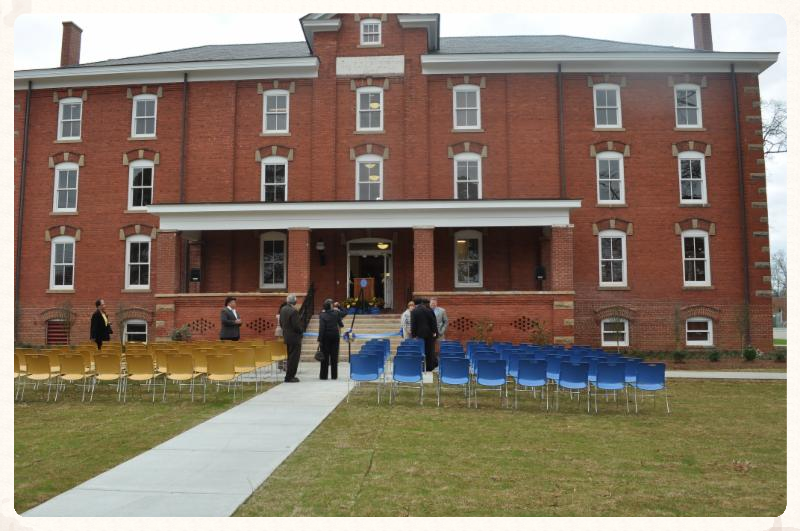 | |
A newly refinished Huntington Hall during its ribbon-cutting ceremony.
|
Restoring FVSU's historical landmarks: Huntington Hall
public relations specialist
Fort Valley State University's Huntington Hall, one of the oldest buildings on campus, underwent a massive face lift. In the old days, the stately structure served as a dormitory for female students. Thanks to the help of $4.2 million in state and federal funding, the majestic 13,500-square-foot red brick building re-opened as the new home of FVSU's External Affairs Division.
"Huntington is a signature building on FVSU's campus," says Stanley Jennings, principal architect of J.W. Robinson and Associates, the architectural firm overseeing Huntington's renovations.
The original construction of Huntington Hall was a labor of love. In 1907, leaders at Fort Valley High and Industrial School, which later became FVSU, secured a $25,000 donation from railroad financier Collis P. Huntington to construct the dormitory. They named the building in honor of the businessman. Student labor hand-fired each brick used in the building's outer masonry and helped erect the structure in 1908. The National Historical Society recently designated the 103 year old facility a historic landmark.
"Because Huntington Hall is designated as a national historic building, we had to follow strict guidelines," says Jennings. "Our company wanted to retain the original fabric and feel of the building as much as possible."
|
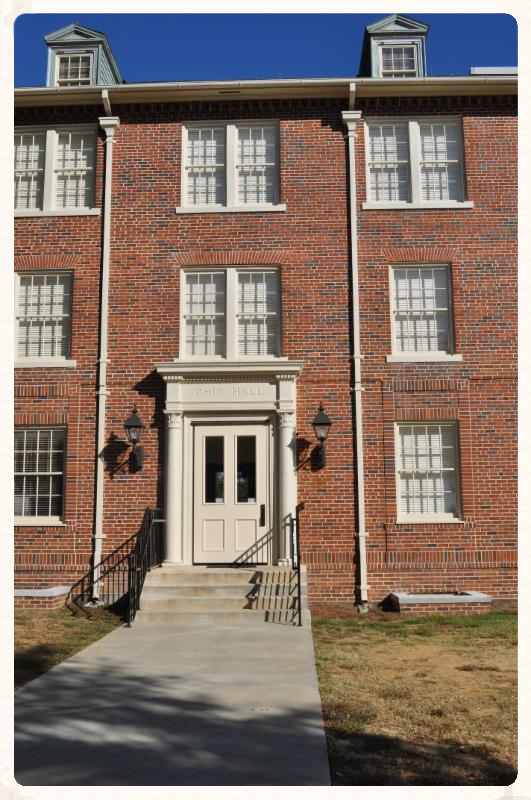 | |
Ohio Hall after its restoration.
|
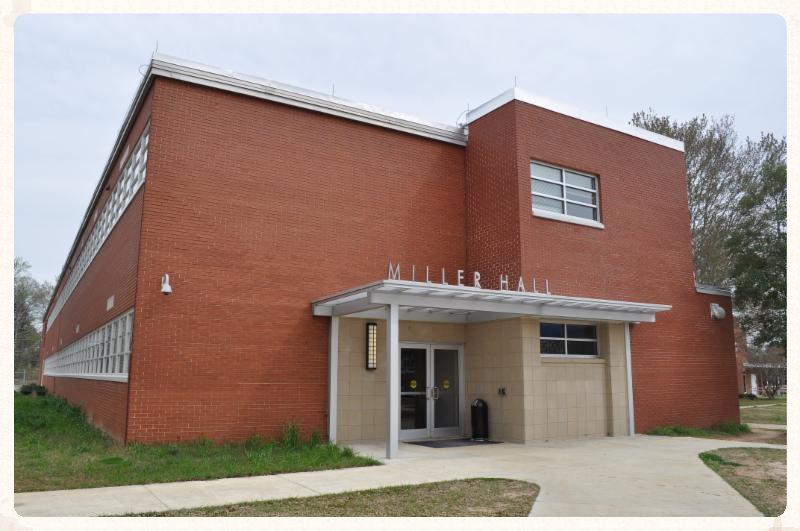 | |
Miller Hall
|
FVSU's historical buildings: Ohio and Miller Halls
by
Christina D. Milton,
public relations specialist
For Elizabeth Miller, her best memories were made at Fort Valley State University. As a teen, she fondly recalls attending fraternity-sponsored events inside Ohio Hall, which started as a male dormitory in 1930. Later, she witnessed the construction of the Miller Science Building, the university's former science building named in honor of her grandfather, James Isaac Miller, one of the institution's original founders.
"I just wanted to say thank you so much for preserving these buildings," said Miller during an August 6, 2012, ribbon-cutting ceremony celebrating the reopening of Ohio Hall and the Miller Building. The brief program that preceded the ribbon-cutting ceremony drew a large crowd of faculty and staff inside Ohio Hall's newly redesigned lobby.
"Ohio Hall was a gift to FVSU from the Ohio Women's Episcopal Church," she said. "We learned [from their gift] that you could do more than just garnish wealth. All the fraternities did their [events] there. In the past, you could walk out and see the Florence J. Hunt Memorial Infirmary standing across from Ohio Hall. It offered medical care, not only to Fort Valley students, but to the community, too." Miller briefly moved to Massachusetts then returned to Fort Valley, only to find out that the campus infirmary had been demolished to make way for new facilities. "To tear [the infirmary] down, was to tear down our history and the foundation that Florence J. Hunt built in this community," she said.
Read the entire story here.
|

FVSU's Living in the Valley radio show
Fort Valley State University has a new radio show called Living in the Valley. Catch up on past episodes online.
|
|
FVSU Updates and Future Events
|
English as a Second Language Program coming soon
|
In an effort to fulfill community and workforce needs related to the improvement in English language proficiency, Fort Valley State University is planning to establish a Second Language (ESL) program.
The program, slated to begin in spring 2015 with first-level courses, will offer instruction in reading, writing and speaking to individuals whose native language is not English.
More details coming soon.
|
|
FVSU POISED FOR ENROLLMENT CLIMB
|
Here is a snapshot of where FVSU's applications and admissions were at this time (February 13) during previous years compared to now.
- Applications for Fall 2013 as of Feb. 13 - 1068
- Applications for Fall 2014 as of Feb. 13 - 458
- Applications for Fall 2015 as of Feb. 13 - 3556
- Admissions for Fall 2013 as of Feb. 13 - 246
- Admissions for Fall 2014 as of Feb. 13 - 126
- Admissions for Fall 2015 as of Feb. 13 - 502
* Source: FVSU Office of Enrollment Management
|
COMING SOON - FVSU's MOBILE APP & NEW WEBSITE

|
|
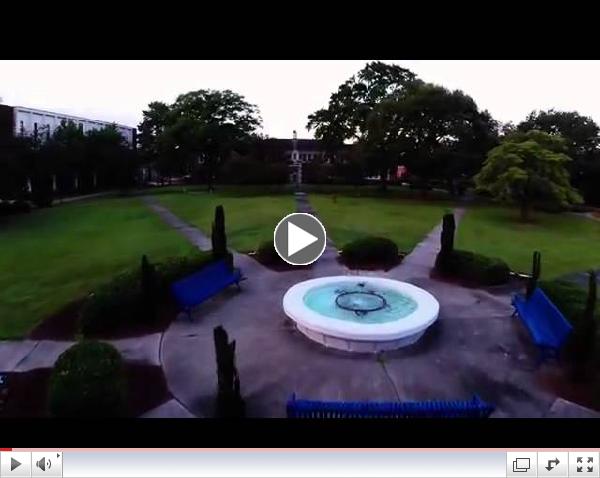 | | We are Fort Valley State University |
Fort Valley State University's Latest Ad
Watch Fort Valley State University's latest commercial on YouTube. To apply for admission at FVSU visit our admissions page. |
|
|